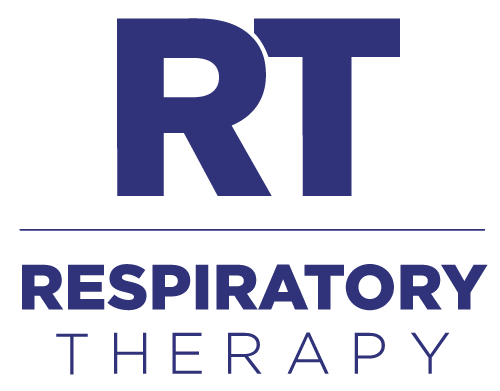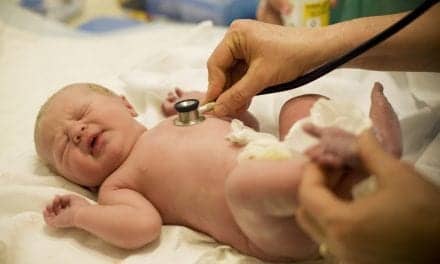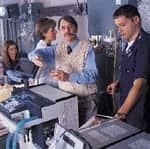
The Long Beach Memorial Cystic Fibrosis Care Team was recently honored with a Quality Care Award from the Cystic Fibrosis Foundation. Bottom Row – Left to Right: Jeremy Johnson, RCP; Jeffrey Riker, MD; Inderpal Randhawa, MD; Sharyn Flavin, NP; Jason Stiles, RN; Marcy Mills, RN; Anjuli Kumar, MD; Mini Mehra, MD; Top Row – Left to Right: Raj Gulati, RCP; Madeleine Hasket, BSW; Armando DelaCruz, PCA; Veronica Smith, PT; Tammy Tran, NP.
In the past 2 years, the adult cystic fibrosis (CF) program at Long Beach Memorial Medical Center has experienced rapid growth. “We’ve grown from a very small adult program of about 35 patients to [roughly] 75 patients over an approximate 2-year period,” says the program’s director, pulmonologist Jeffrey Riker, MD. Riker is also medical director of respiratory care services and the medical critical care unit, as well as clinical professor of medicine and director of the pulmonary critical care fellowship program, at the center located in Long Beach, Calif.
The drivers for growth have been threefold, according to Riker: increased word-of-mouth referrals; the successful outcomes of pediatric cystic fibrosis patients and their subsequent transition into the adult program; and the transfer of patients from another hospital in the region, which had to close its program due to an inability to retain a pulmonologist with the necessary expertise in adult cystic fibrosis care.
The expansion necessitated change—the Long Beach Memorial program needed more space, more staff, and more resources, factors recognized by a supportive administration. “There aren’t a lot of certified adult CF centers in Southern California,” notes Riker, citing only two other institutions in the region: Los Angeles County LAC+USC Healthcare Network and the University of California’s UC San Diego Medical Center. Because the USC facility handles so many post-transplant patients, its program also operates at full capacity.
Motivated by the strong community need, Long Beach Memorial set its mind to creating a superb program. “You shouldn’t present yourself as a CF center unless you can really do the best you possibly can. So our goal was to try to rank within the top 10,” Riker says, referring to the annual outcomes data published by the Cystic Fibrosis Foundation, Bethesda, Md. In the 2010 outcomes, Long Beach Memorial ranked above average, but the team felt there was room for improvement.
Results for 2011 will not be published until later this year, but the center recently received a Quality Care Award from the foundation. Long Beach Memorial was one of 11 centers selected for the honor from a pool of 32. Recipients of the CF Foundation award are chosen based on a long list of quality improvement criteria.
One of the most impressive objectives—and successes—was to improve the program patients’ predicted forced expiratory volume in one second (FEV1) by 5% per year for 2 years (a number chosen with an eye on the top 10 ranking, according to Riker). Based on internal records, the team achieved astounding success, with an improvement in patients’ predicted FEV1 of 4.8% after the first year. Riker spoke with RT about the methods the team employed to achieve this and other goals, as well as what they are aiming for next.

“You shouldn’t present yourself as a CF center unless you can really do the best you possibly can,” says pulmonologist Jeffrey Riker, MD, physician director of the adult cystic fibrosis program, medical director of respiratory care services and the medical critical care unit, and clinical professor of medicine and director of the pulmonary critical care fellowship program at Long Beach Memorial Medical Center, Long Beach, Calif
Educate, Educate, Educate
One of the key factors to successful management of cystic fibrosis, and the resulting improvement in predicted FEV1, is patient participation. “We’ve calculated that the average patient spends at least two-and-a-half hours a day on disease management. So it is a challenge to get them motivated and knowledgeable and have them want to be—and actually be—active,” Riker says.
The initial step toward motivating, educating, and helping a patient is to understand what the patient understands. “When we first see them, we complete a knowledge assessment test to see where they stand,” Riker says. A program is then developed to help fill in the blanks.
Staff will work with patients during scheduled education periods, supplementing their efforts with a library of educational DVDs on appropriate subjects (that the center continues to develop). Media carts with flat-screen televisions and DVD players are used to view these materials, which the staff can then review with the patient during educational sessions.
Secure Patient Commitment
Early in the care program, often during the first visit, patients are asked to sign two contracts indicating their commitment to treatment and education. The step is too new for the team to have evaluated its impact, but the goal is to increase patient compliance and commitment regarding treatment.
The first contract declares their agreement to “not reasonably refuse treatment.” “If they don’t like a certain airway clearance, we can try something else, but we want to have a discussion. Patients can’t just throw the respiratory therapist out without having such a conversation,” Riker says.
The second contract solicits a patient promise to avoid the abuse of narcotics, either as an inpatient or outpatient. “[Cystic fibrosis] patients have real pain, and drug use and abuse is a major issue with this population,” Riker says.
Deliver Perfect Care
For its part, the program promises to provide “Perfect Care,” a concept developed at the Cincinnati Children’s Hospital Medical Center in Cincinnati, Ohio. The methodology outlines a care plan with specific parameters that define “perfect care.”
Criteria involve annual requirements, such as the completion of four patient-physician visits, at least two pulmonary function tests, and at least two to four cultures. “This has been a big improvement, and we are scored high by this measurement,” Riker says.
The Long Beach Memorial cystic fibrosis team also has developed its own innovative measures to improve care. One example is its efforts regarding airway clearance (another key element to the FEV1 success). One new technique, supported by hospital grant money, involves the media carts, which, in addition to the televisions and DVD players, also are equipped with Wii game machines. The program has two systems and can order new games periodically.
“A lot of the young people hate doing airway clearance but love playing Wii games, which can be a wonderful airway clearance activity,” Riker says, noting the RTs also enjoy the games. “The respiratory therapists can get patients started, demonstrate what’s available and how to do it, and play the game with them,” Riker says.
Accommodate Schedules
Of course, to enable these improvements, the program needed more space and more staff; and the administration responded with the resources. About 1 year ago, the program moved from a small space with three exam rooms to a larger area across the street with six exam rooms and additional workspace. Workflow has improved tremendously.
Now, rather than being limited to the ability to see two or three patients at a time, the team can handle six to eight. The extra space has made infection-control efforts easier, tremendously increased scheduling flexibility, and reduced patient wait times by half.
“Our data on patient wait time showed that [in the smaller space], patients would wait an average of three-and-a-half hours. Now, in the new clinic, it’s down to about one-and-a-half hours,” Riker says.
To improve the patient experience even more, the clinic is opening up additional hours, including a second patient clinic and an educational session on Monday afternoons. The new schedule may result in smaller groups during clinic; “we’ve had eight patients in one clinic session, and that can get hectic,” Riker says.
The flexibility also can lead to happier patients. “Some patients don’t want to come in the morning, especially if they’re coming from a distance and will get caught in California traffic,” Riker says.
Build Expertise
Along with the additional patient volume and space came the need for additional staff. A nurse practitioner, recently brought on board through hospital funding, has been a tremendous help, handling many of the transitional patients. She joined the Long Beach Memorial staff after the other regional program had closed and so brought that expertise with her.
A grant from the CF Foundation provided funding to another professional with an ideal background for managing transitional patients that includes board certification in multiple disciplines, such as pediatrics, pulmonology, and immunology. The monies allow him to take time out of his practice to attend to patients in the Long Beach Memorial program over a 3-year period.
A third addition to the team, in response to the growth, is a dedicated respiratory therapist, Jeremy Johnson, for the adult program. The administration identified an RT already on staff with the knowledge, skills, and interest and committed him to the pulmonary rehabilitation department.
“He’s become very good at airway clearance techniques and instructing patients about the use of aerosol machines and dose inhaler technique. And that’s been a huge benefit because we now have consistent teaching to help us standardize our techniques,” Riker says. If Johnson is not present for a session, he stops in on each one to ensure the procedure has met protocol.
Transition Patients
The improvements in practice and logistics have helped to improve the program overall. The institution can now offer three CF clinics: the pediatric program through Miller Children’s Hospital Long Beach, the adult program at Long Beach Memorial, and a transitional clinic (located in the old adult clinic space) that facilitates the transfer of patients from the pediatric to the adult program.
“Miller Children’s Hospital does a great job at treating a whole variety of childhood diseases, not just CF but conditions like sickle cell disease, congenital heart disease, spinal bifida, juvenile diabetes, and childhood cancers,” Riker says. As outcomes improve and these patients survive longer, there is a need to create adult programs to manage the continued treatment of these patients; in some cases, this need is regulated.
“The CF Foundation has made it a requisite that pediatric centers team up with an adult center, and the hospital views our program as a model for that,” Riker says.
The two CF programs work closely together to coordinate transitional care, a move that patients appreciate. “When they reach a certain age, patients begin to take responsibility for themselves. They don’t want you speaking to their parents, and they don’t want to be hospitalized in a pediatric department, but it is a huge emotional step,” Riker says.
Although patients are given a different doctor when they switch programs, they do continue to see many of the same staff who are shared between the two programs, including RTs, a dietician, ENTs, and the gastrointestinal specialist. Because treatment is so intense, a smoother transition could contribute to a more positive outcome.
Efforts in the field over the past 2 decades have contributed to significant advances already. “When I started in this area 20 years ago, the average expected age of survival for some people with CF was about age 26, and now it’s up to 37. We have a patient who is 55 and a number of other patients in their 50s, as well as their 40s and 30s,” Riker says.
Grow Older and Wiser
As patient outcomes have improved, the payor mix has as well. State programs have evolved to support adult CF patients, so there is some reimbursement available through this route, although the rates are not ideal. Insurance policy changes, however, have been more favorable.
“Children” are now able to stay on parents’ insurance policies longer, improving reimbursement on these patients until they are 21. After that, in many instances, patients are able to secure their own insurance through employment or marriage. “Although the CF program is not viewed as a big revenue generator, the hospital does consider the financial aspects, and we should break even,” Riker says.
Looking ahead, more improvements will be made to continue advancing patient health and increasing efficiency. “I don’t think we’ve tried anything that hasn’t worked, but we have identified 60-plus projects—some small, some major—we would like to implement,” Riker says.
The ideas came out of the facility’s year-long participation in an adult fibrosis center quality improvement consortium. Long Beach Memorial was paired with two mentoring centers that shared expertise and guided projects; the hospital also participated in monthly conference calls and three site visits. The effort netted many ideas, a large portion focused on adherence and documentation.
But the team does still hold the lofty aim of improving patients’ predicted FEV1 by another 5% over the next year. “I think the second year is going to be harder,” Riker says, but he and his team are ready for the challenge.
Armed with its Quality Care Award, the Long Beach Memorial cystic fibrosis team is already achieving its goal of moving up the ranks of quality care—completing a rapid climb to successfully mirror its rapid growth.
Renee Diiulio is a contributing writer for RT. For further information, contact [email protected].










